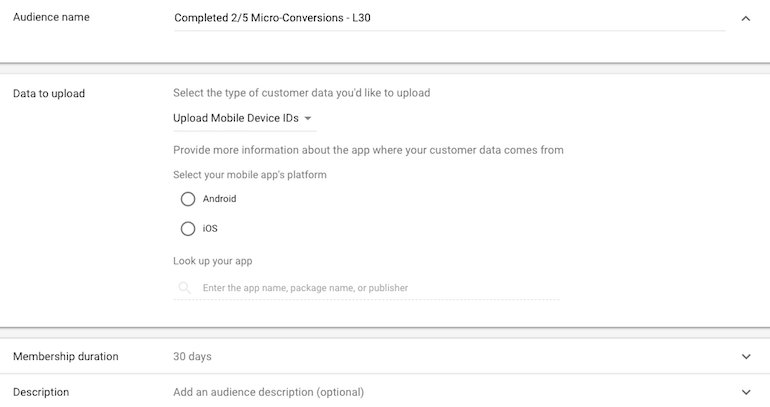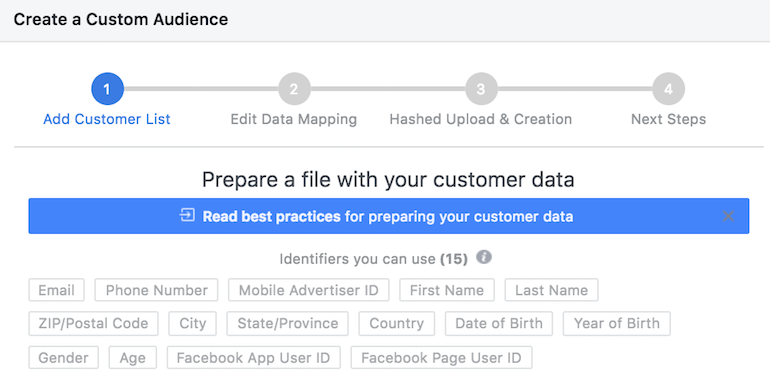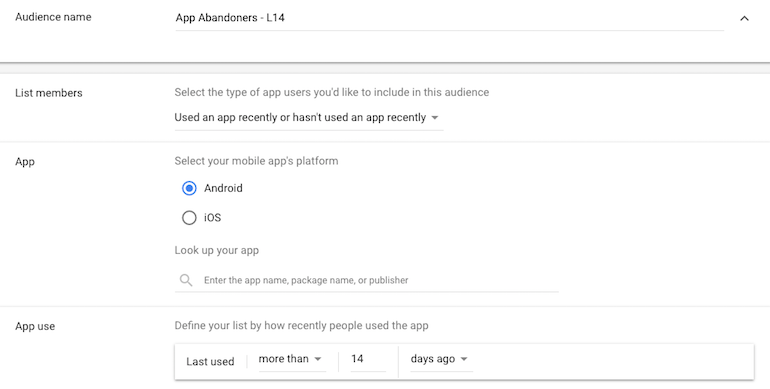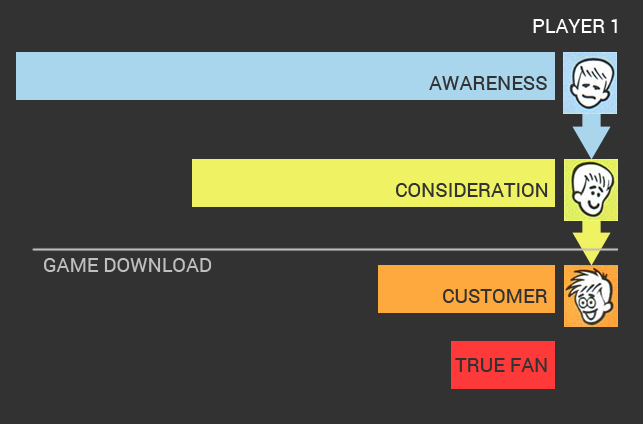If you develop mobile games, the majority of your revenue likely comes from in-game advertising or microtransactions, and both of these happen post-download. In 2018, an average of 1,800 games/mo were launched on the IOS app store alone. With this sort of competition, users have more options than ever to find a game they want to invest their time (and money) into and can shop around accordingly. Having a strategy for user retention and placing ad dollars in areas that will create the most long term revenue for your game is imperative. If your sole focus is on user acquisition, but no one is loyal to your game, you’ll go broke very fast with this model.
The key to running profitable advertising to increase user retention is to hit select users with highly targeted messaging, post-download. Facebook and Google Ads both have the ability to use first-party data to retarget audiences with specific messaging. Here are three tactics you could incorporate into your digital retargeting strategy for a 2019 game launch.
Google Ads Customer Match
On average, in 2018, 21% of users now abandon an app after just one use. For mobile games, creating multiple data gathering points in the first time user experience can inform when users are dropping off and where advertisers can re-engage these users.
Let’s say we’ve crunched the numbers and notice players are dropping off after they use up all of their in-game currency (tokens, points, charges, etc.). If getting past this point is important for a user to become loyal to the game, getting an in-game offer in front of these people can nudge them back into playing.
Google Ads App Retargeting – Example Audience

With Google Ads Customer Match, advertisers can upload a list of specific mobile device IDs (people who have completed a specific action in the app) to create an audience from. You can then take that audience and re-engage them on the Google Display Network, either on mobile apps, YouTube, other gaming domains, and more.
Facebook Custom Audiences
Microtransactions are such a crucial piece of mobile game monetization. Understanding when users are taking the plunge to become financially invested in a game, and what behavior looks like post-purchase, means advertisers can target these people and continue nurturing them.

Similar to Google Ads Customer Match, Facebook’s Custom Audiences allow advertisers to upload lists of emails, first name, last name, etc. to match to specific users on the platform. Let’s say your data points to users who have previously purchased are more likely to continue purchasing. You can upload this specific list of users who have completed a microtransaction into Facebook, and then show them ads that highlight the newest level, boss, or item in your game, to re-engage the user and get them back playing.
Google Ads App Remarketing
The low hanging fruit for boosting user retention is to get the people who have already downloaded your game but have stopped playing, to play again. With Google Ads Remarketing, we have the ability to target specific audiences of people who haven’t used your app for X number of days, used a specific version of your app, or took specific actions in your app.
Google Ads App Retargeting – Dormant Audience Example

From here, you can begin testing different audience durations and messaging. Chances are an audience who has abandoned your game for 3 days is receptive to a completely different message than someone who hasn’t played for 30 days. It’s up to you to hone in on what type of offer is better for which audience.
Wrapping Up
Advertisers have a lot of power to influence the increased focus on user retention. Leveraging first-party data, strategically, to make your game more profitable is a great way to survive in the ocean of mobile games. Understanding targeting capabilities on digital advertising platforms can help fill your marketing funnel and maximize daily active users.




